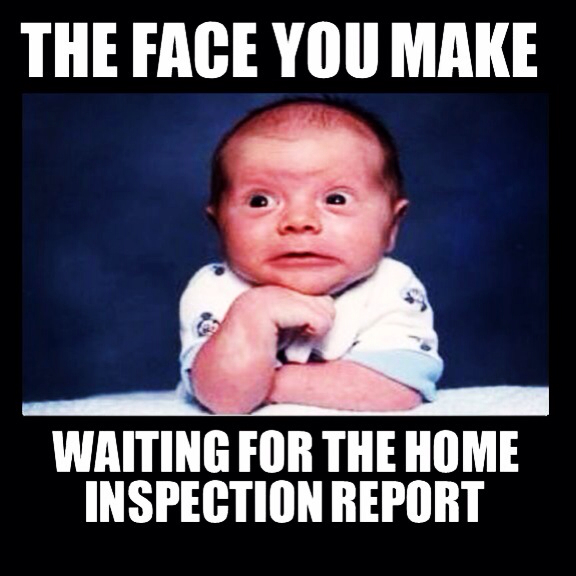 As the clock ticks toward year’s end, it’s time to review the 2015 real estate market.
As the clock ticks toward year’s end, it’s time to review the 2015 real estate market.
When someone asks me how the real estate market is, the cocktail party answer is that it’s been a very pleasing 12 months and future looks bright and shiny. Because the economic news is good our Denver Metro real estate market is projected to stay strong but not overheat. I’ll share some of the metrics I use to evaluate the market and understand it better, describing what 2015 looked like and where I think we’re headed.
Market strength–2015 was an extremely strong seller’s market. The market strength peaked in the spring when the bottom dropped out of our inventory and multiple offers were all the rage. Frustrating for buyers who felt they had to give away so much to stay competitive, the good news is that the market reacted appropriately and became more balanced as the year progressed. With prices on the rise, sellers were motivated to sell as we approached the fall so the market cooled with the start of school and the weather. It is still a strong seller’s market, but far more in balance. I expect 2016 to continue along this line and see no sign of a major imbalance that could lead to any sort of ugly peak and crash. Sellers should get a good price for their homes and replacement properties should not be as hard to find.
Buyers– Real estate website Trulia says that buying an average home in Denver is a whopping 38 percent cheaper than renting a home! For the average home, the interest rate would have to skyrocket to 11 percent for renting to become cheaper than buying, meaning that it is currently MUCH more affordable to buy than to rent. Even with current prices and current rents, interest rates would have to nearly triple to make renting more affordable than owning. (Call me if you want to talk about this.)
Sellers-Can’t say this enough: the most important thing to prepare your home for sale is to get rid of clutter. This includes furniture. You may have learned to live with that cherished armchair stuffed into the corner but a professional stager will often times whisk away half of your furniture. The house looks so much bigger for it, leaving space for a buyer couple and their agent to tour the home without bumping into each other, and space for their imaginations to make it their own. You don’t have to go “Stager drastic” but take a hard look, be objective, and see what you can live without. Painting always pays for itself and statistics show that springing for a staging company is often a good investment.
Rental Vacancies– The rental market is stronger than it has ever been in metro Denver. The vacancy rate for 1- to 4-unit properties is an extremely low 2 percent. That’s a drop from the already 4.7% we’d been experiencing for the past few years. On top of this, rents are rising faster than ever, up 30% in the past three years. With rents equaling a mortgage payment, we’re seeing more renters making the decision to buy. Why live waiting for another rent increase, tough competition and another application process without building any equity? Many homeowners who lost their homes in the downturn and have been renting, are becoming eligible to purchase once again. This is great news for the market and will certainly lead to more sales in 2016, though the influx of buyers insures a continuing seller’s market.
Interest rates– No one knows exactly what interest rates will do in the future but my best guess is that they may rise a little in 2016, but only a little. Remember that the Federal Reserve has control over only short-term, not long-term interest rates. Even if the Fed raises rates, that doesn’t directly affect the 30-year home buyer interest rate you are concerned with. Long-term interest rates are affected by the bond market (as bond prices decrease, interest rates increase) which, frankly, is not predictable. Understand though that interest rates are at near 50-year lows so they are highly unlikely to fall any further. All we know for sure is that someday they will go up.
The Economy– No matter what you may hear in the months leading up to the election (places hands over ears), right now the metro Denver economy is very strong. This is fueling our terrific real estate market and the rising population of our city. The unemployment rate is extremely low, about 3.5 percent. Inflation will stay in the range of 1-2 percent, our population is rising at a rate of 50,000 people/year and consumer confidence continues to rise. Nothing can be better for the housing market than a strong and steady economy.
Mortgage -The single most important number for a home buyer is their FICO score. For good or bad, your FICO plays a major role in your ability to finance your home purchase. Your credit score is a snapshot taken by the three leading credit bureaus, TransUnion, Equifax and Experian, to help lenders determine what sort of credit risk you are. Your FICO is a number between 300 and 850 and is calculated by a complex algorithm assessing your past credit history. Most home lenders will consider a score over 700 to be excellent while scores below 600 are considered poor. The better the score the more credit will be extended, at better terms, with a lower interest rate. The best credit terms are extended to consumers with scores above 740. Therefore, it’s critical to understand what your FICO is and what you can do to improve your score. When I work with buyers I help them understand the factors affecting their score so they can work to improve them. I can’t think of a better investment in your future than to spend a little time working on your FICO score.
Here are a few tips I give my clients:
1.Don’t max out your cards, try to keep them under 50% of available credit. Running high balances can severely impact your FICO.
2.Continue paying your bills on time.
3.Don’t apply for new credit or cancel an old card because length of credit helps.
4.Pay down high balances.
5.Dispute and resolve any inaccurate items in your credit report.
6.Invest in a credit monitoring company to track the changes to your score.
Denver Real Estate News May 2015
What’s new in the Denver Real Estate Market?
The question I’m asked all the time by friends, colleagues and clients who are still renting is whether it’s too late to buy a home. “Are we heading for a big downturn?” and “Are we too deep in the market cycle to buy?” they wonder. For those of you who read my newsletter and know me well the following will sound familiar but it bears repeating: timing the real estate market perfectly is extremely difficult (maybe even impossible) and those who try usually fail. So don’t try to time the market. Instead, look at factors like the ones below to see if homeownership is right for you.
1. You should buy a home when you feel it’s the right time in your life to do so. Don’t try to time the market, instead time your life. Are you getting married? Sick of paying skyrocketing rents? Looking for a bigger place for you and your family? Want your own backyard for the kids to play in? Want to be part of a neighborhood community? Plan on staying in one place for a number of years? Want to build long-term wealth? These are the types of questions you should ask yourself when considering whether you want to own a home. To the extent you say yes, home ownership might be the answer for you.
One important stat to keep in mind is that the average rental household in the U.S. has a total net worth of only $5,500. In contrast, the average homeowner has a net worth of $195,500 — that’s 36 times those who rent! Over the past 15 years, this multiple has ranged from as low as 31 times to as high as 46 times the net worth of renters. You don’t want to try to time the market, but over the long term home ownership is the tried and true path to wealth accumulation and financial security. (So is owning rental property, by the way. Call me if you’d like to learn more about that as well.)
2. Interest rates remain at record lows but this can’t last forever. No one knows when they’re going to rise (remember, you can’t time the market!), but rise they will at some point in the future. Though home prices have gone up the past several years, low interest rates continue to make homes relatively affordable (especially compared to renting). Once interest rates do rise the window of home ownership affordability will truly begin to close for a lot of potential buyers and they will be sorry they didn’t act when interest rates were at 50-year lows.
To illustrate the numbers, assume you are purchasing a $210,000 home with a 5 percent down payment. The Principle + Interest payment at 4 percent interest would be $952 per month. Just a 1 percent interest rate increase to 5 percent would result in a payment of $1,070 per month for a total increase of $128/month and $1,416/year. Now assume that rates tick up to 6 percent. That increase would result in a 21 percent increase in payments from $952 to $1,196. Where you really see the effect of these increases is when you hold the property for the full 30 years. On a $200,000, 30-year fixed-rate mortgage that increases from 4-5 percent, the borrower who obtains the 5 percent loan would pay an additional $42,772 in extra interest as opposed to the borrower who paid just 4 percent interest. That’s 21.4 percent of the total loan amount! This is why a lot of folks who don’t purchase a home while interest rates are near record lows are going to regret it down the road.
3. The main reason the average home owner has so much more personal wealth than the average condo owner is that over time, homes appreciate in value. Over the past 44 years, homes in metro Denver appreciated 6 percent per year, about 1 percent above the inflation rate. If you buy a $200,000 home, you can expect over the long term its value to rise about 6 percent every year. This means you’d make $12,000 in appreciation the first year, an additional $12,720 the second year, another $13,483 in the third year, and on and on. It’s that simple. So if you want to build wealth, your best bet may be to take advantage of these numbers and buy a home for the long term. I can help you do this. Call me and let me show you how.

There’s something very special about the GLOBAL DOWN SYNDROME FOUNDATION and it was clearly on display at the BE BEAUTIFUL BE YOURSELF fashion show. Perhaps it’s because of effusive and focused energy of its founder, Michelle Sie Whitten, the electric smile of Jamie Fox escorting his two young daughters down the red carpet and sharing delightful stories about sister, DiOndra Dixon or the guests themselves. I asked Alec Baldwin about what made this night’s event different than all others.
“Well Jamie, you know. His sister, DiOndra, has Down Syndrome and so it’s family. We have our passions, things that strike home. My mother’s a breast cancer survivor so that’s a big cause for me, every family has their thing.”
So family is the great connector? I asked.
“Yes, I think that’s what makes it special, that’s what grounds it and makes you want to be a part of it.”

For Helen Hunt it was,” I wanted to be a part of something that supports the civil rights of all people, especially those with different abilities.” Quincy Jones Exceptional Advocacy Award winner, supermodel Beverly Johnson has a niece with Down Syndrome and actor John C McGinley’s daughter was born with the condition and everywhere I turned I heard stories of how so many lives have been enriched by a loved one with Down Syndrome; how much joy they bring to those who know them.
John C McGinley spoke of the work the Global Down Syndrome Foundation is doing and that it extends beyond quality of life, equality and advocacy, there is a focus on science and research. Indeed, Global supports the Linda Crinic Institute for Down Syndrome with fundraising, education and research to help eradicate the medical and cognitive ill-effects associated with Down Syndrome. Life-changing research is being done through the Alzheimer’s Disease-Down Syndrome Research Program, through challenge grants to national and international scientists to study sleep apnea, auto-immune disorders and leukemia. World-class medical care is provided as well through the Sie Center for Down Syndrome at Children’s Hospital Colorado, and so much more.

There was such a spirit of joy, of connectedness and hope at the Be Beautiful, Be Yourself Fashion Show. The outpouring of love was reflected in an outpouring of support as a wonderfully executed live and lively auction brought out cheerful givers, open hearts and open pocketbooks. But the highlight of the evening was definitely the fashion show featuring beautiful young people who happen to have a condition called Down Syndrome. Oscar winners Helen Hunt and Jamie Foxx, Oscar-nominee, Laura Dern, Emmy-winning Alec Baldwin, John C McGinley, Beverly Johnson, Denver Nuggets’ JaVale McGee, Arron Affalo, and Kenneth Faried, Broncos Malik Jackson, Ben Garland, Britton Colquitt and Brandon McManus and pro-golfer David Duval all brought a sense of purpose and delight to the event. Wonderful to watch these celebrity models escort the real stars down the runway, strutting and beaming and blowing kisses with sweet triumph.
Generosity, cheerfulness and giving over to the best in one another were what was on parade that night. And the soundtrack to the evening was pure joy.

Photos courtesy of Global Down Syndrome Foundation, Kristopher Lewis Photography. Helen Hunt photo, Bogdan Morozovskiy, photographer
I object! Often the process of buying or selling a home is so emotional, so stressful, that our every fear is stirred up. That’s why when buying or selling a home, the home inspection is critical. Your home inspection can put you at ease, whether you are purchasing a home you want to feel good about or selling a home you want to feel is safe for the new owner. The home inspection and the resulting INSPECTION OBJECTION and RESOLUTION can be fine points of the negotiation. Of course, the sellers don’t want to reduce their proceeds and the buyers don’t want to take on the extra expense of repairs. So, where’s the middle ground?

Let’s start with a few basic questions and let the answers guide us to our home inspection answers.
To the Sellers:
1. How motivated are you to sell your home at this time, with these buyers, under the terms of the contract?
2. What is your goal in selling your house? And what effect does this sale have on your life right now? On your future?
3. If I could tell you that the goal you want in question #2 would cost you X amount of dollars, would that seem like a fair price?
4. Is the cost of the repair(s) more or less than the cost of another month, maybe two, of your mortgage payment?
To the Buyers:
1. How would you feel if you let this house go?
2. Are the repairs immediate or can they be reasonably deferred?
3. How many things are you asking the Sellers to repair or credit for? I mean, it’s one thing to ask them to replace the faulty old Zinsco electrical panel or install radon mitigation, quite another to ask for a cracked plastic outlet cover to be changed.
4. Do you feel you are safe in the house without the repairs?
It’s that last question that is the most important. Are the requested repairs, replacements or credit for such, necessary to provide or protect the health and safety of the home buyer? This is where I draw the line. If the home inspection reveals something that would cause any reasonable buyer to feel unsafe they might need to walk away from the transaction. Even if you, Mr. and Mrs. Seller have lived with it for 20 years and nothing has happened, you might as well buck up and agree to make the repairs. You’ll have to disclose the issue to the next buyer if you lose this contract now that you know about it, so the problem isn’t going away.
If the buyers have reasonable expectations of the home’s condition based on its age and understand the responsibilities of home ownership, then health & safety should be your guide. That “honey-do list” the Inspector gave you? That would be yours, not the sellers, but those hot wires or the recalled electrical panel? Definitely calls for the experts. When both parties move away from all emotional or economic considerations and apply fair and equitable logic, the questions answer themselves. Logic, who knew?
Now… back to my clients and that electrical panel.
Denver Real Estate Market News
 There’s a lot of talk in Denver about this “crazy new real estate market”, how “everything’s different than it used to be”, and after six years of heartbreak, I say “thank god”. For those interested in real estate, and for those who might be considering buying or selling a property, understanding the big picture is critical. So here’s where it stands.
There’s a lot of talk in Denver about this “crazy new real estate market”, how “everything’s different than it used to be”, and after six years of heartbreak, I say “thank god”. For those interested in real estate, and for those who might be considering buying or selling a property, understanding the big picture is critical. So here’s where it stands.
Most people think this tremendous seller’s market and that the super low inventory is something new, or that the market’s going to suddenly erupt overnight. Neither is true. Here’s the truth: we are FOUR YEARS PAST THE BOTTOM of our last real estate cycle. Just because the Denver Post is suddenly aware of the real estate market, or Zillow writes screeching articles about the tight market in order to sell ad space don’t be fooled. It’s not new. It is a logical continuation of a market that is reacting strongly to the over-selling we saw between 2007 and 2009 (which finally bottomed out in 2009). It’s doing exactly what real estate market cycles do. They rise and fall over long periods of time, but historically (and I mean over the past 40 years) residential real estate appreciation has averaged 6 percent per year and there is no reason to think that is going to change over the next 40 years.
We tend to think of market cycles in short-terms, spiking and crashing over short periods of time, but a quick look at the last market cycle clearly shows this is not how real estate works. Real estate cycles tend to move in much broader periods, 7-10 years are typical over the past 40 years. This is why predicting short-term market movements can be very difficult, whereas assuming the market will move in 7-10 cycles is a pretty good guess. During these past four years, as we continue the rise from our low, we have seen more of a seller’s market. Plummeting inventory and rising prices drove nervous buyers into multiple offer competitions with happy sellers getting the price they want. In fact, look at Chart Y and you’ll get a great perspective of how strong our market is. You see that the metro Denver 2013 Closed Dollar Volume of all residential sales hit a new high which translates into a record amount of money in the pockets of sellers. Good times for sellers!
Many of my buyers are understandably nervous. Rents are skyrocketing (up 8% this year) but news articles and TV reports claim the market is teetering on the brink of a crash, creating a “Fear of Buying”.
So let me be clear: no one can predict the real estate market with 100% accuracy. I can’t, the Federal Reserve can’t, the banks with all the money can’t (obviously!), no one can. But, understanding how market cycles work, and recognizing how low our current inventory is, I can say with confidence I do not see any impending weakness in the market over the next couple of years. We are four years into what will probably be a typical 7-10 year cycle of low inventory and rising prices. I can’t tell you what the Dow Jones will finish at next Monday. I can’t tell you if the Rockies will win their fifth game of the season. I can’t tell you what the weather will be on April 3rd. But I can say with confidence that real estate tends to move over predictable long-term trends, and this market cycle has a long way to go.
Denver Real Estate Market Trends
By now you know the Denver real estate market has bounced back, now let’s look at it by the record-setting numbers.
At the end of 2013 there were:
7,275 homes for sale, (down 6%).
67,550 new listings came on the market for the year, (up 12%).
67,429 homes went under contract (↑20%)
54,024 homes closed (up 17%)
The average days on market was 58 days (↓25%)
Average sold price was $306,910 (↑10%) and closed dollar volume was $16.6 Billion (↑29%). If this sounds like Realtor crack, it is.

But what does it mean for you?
1. Did ya take a look at that map? Go ahead, click on it. Remember when there was a whole lot of pink and red, lots of yellow…? I do. Now the map is predominantly green and the key shows you how much each neighborhood has improved over last year.
(If you’d like more detail about your own neighborhood, shoot me an email.)
Metrolist expert Gary Bauer observes it this way:
The inventory of active listings, homes available for sale, started a downward trend in 2011, which continued through 2013. In March, 2013, the inventory of active listings was 6,682 homes, an all time low. Active Listings continues to be a primary sustainability concern for the home market.
Home affordability declined due to median home price increases. The month’s supply of inventory started and finished the year at 2 months.
Once again, rental rates continue an upward trend and rental availability continues to decline. With declining distressed properties, foreclosures and REO, at less than 10% of the market and low active listings, new home builders will again be an alternate in the housing market. The largest number of Single Family and Condo properties sold in price range of $100,000 to $499,999 for 2013. The largest number of Single Family homes sold in the price range of $200,000 to $299,999. The largest number of Condo homes sold in the price range of $100,000 to $199,999.
Million dollar plus homes closed/sold were up 16% when comparing 2013 versus 2012. Million dollar plus home closings accounted for $1.5 Billion of the $16.6 Billion total 2013 volume.
Mortgage interest rates started to increase and then fluctuated downward to later increase again during the year, with an overall increase of approximately 1%.
And that’s good news for all of us!
Why Do I Keep Getting This Newsletter?
 Admit it. This thought has crossed your mind, hasn’t it? You’ve probably even made a mental note to ask me, or worse… unsubscribe. So what makes me send you this monthly missive? The reasons are few, but they’re mighty.
Admit it. This thought has crossed your mind, hasn’t it? You’ve probably even made a mental note to ask me, or worse… unsubscribe. So what makes me send you this monthly missive? The reasons are few, but they’re mighty.
1. Yes, I am in the business of helping people buy and sell homes and I’d like for you to think of me should that thought also cross your mind. Pretty crafty, huh?
2. To keep you up to date with the Denver real estate market, how it’s doing and where it’s headed. Like this little ditty from USA Today.
2. I believe that life is richer when experienced in community, and that a community is empowered by engagement.
3. I believe that real estate is all about story. Every home, every buyer, every seller, comes with a tale to tell, a story to reveal.
4. I have a knack for meeting interesting people who do really cool things and I want to share them with you.
And here comes the mighty…
5. Every month when I send out my newsy little newsletter, chock full o’ tips about home values and market trends, writing of the wonders of a swanky little art space, or the best place to take a burlesque dance class on a Sunday morning, you call me. You reach out via comment, Facebook, phone or email to let me know what you thought, ask me a question, or (best of all) set up some face-time. And I like that. A lot.
Building and deepening relationships, creating dialogue, drinking coffee… whatever I can do to help you put a little bump in your daily grind.
The Virgin and the Badass Bard
 Theatre’s obsession with Shakespeare, coined ‘bardolotry’ by George Bernard Shaw, has always escaped me. While Voltaire called his work “an enormous dunghill”, my aversion to Sir Will is far less eloquent. Not knowing my First Folio from my “What ho Malvolio”, I’d quipped “I hate Shakespeare” in defense. “You don’t know what the hell he’s saying, he takes too long to say it and you know what’s going to happen in the end”. But truth is truth… it’s personal.
Theatre’s obsession with Shakespeare, coined ‘bardolotry’ by George Bernard Shaw, has always escaped me. While Voltaire called his work “an enormous dunghill”, my aversion to Sir Will is far less eloquent. Not knowing my First Folio from my “What ho Malvolio”, I’d quipped “I hate Shakespeare” in defense. “You don’t know what the hell he’s saying, he takes too long to say it and you know what’s going to happen in the end”. But truth is truth… it’s personal.
When I was a student at the Stella Adler Conservatory of Acting in New York City, I was enrolled in the requisite Shakespeare class. Our teacher heaped praise upon the European students, fawned over the Renaissance Faire maids as they flitted twixt texts, winked at the tinfoil swords and paper crowns, taking delight in our dalliances. He found the good in everyone’s work… everyone but mine. It seemed that no matter what scene I chose or how long I’d rehearsed it, I’d leap “Once more unto the breach” to a tragic ending. I can’t tell you how many times I rushed out of the building to hail a taxi and hide my tears, or how much it cost in cab fare to sob my way home to Tribeca, but it felt like a pound of flesh. As this wasn’t the case with my other acting teachers, I was left to assume at Shakespeare I sucketh.
Being Stratford-upon-Avon challenged, I’ve managed to work around my shortcoming and carve out decades of work on stage, in film and on television without ever trodding the boards for the Bard. Until now.
I was at Water World when the call came in. It was the Denver Center Theatre Company with the offer of a role in “Romeo & Juliet”. I snorted my slushy out my nose, choking back surprise along with terror. “Me?” I asked. “Are you sure?” They were, revealing I’d be playing Lady Montague. “Is that Romeo’s mom?” I asked, trying to recall the Franco Zeffirelli film I saw at the drive-in lo these many years ago. “It is.” came the reply. Hmmmn. The play is’t called “Romeo’s Mother” so I can probably pull it off, I figured. Some rhyming verse, a ruffed collar and losing my metaphorical maidenhead beside men in pumpkin pants made it too saucy to resist. “Why not?!” I blurted out before they could catch their mistake.
There must be a million things we’ve held ourselves back from over some misconception of our youth, Brussels sprouts for example. Schoolyard taunts and misspoken remarks of friends and lovers twist the view we see in the mirror. I’m sure my teacher had no idea the lasting effect his critique would have on me, but I made the choice to break up with Billy Bardy, didn’t I? Shakespeare, like the bitter cultivar, may be an acquired taste but so is the taste of freedom from all that crap. Maybe, in spite of the Mayans, life goes on, stretching itself out to give us the time to circle back to find the sweetness in what was sour and to savor it.
Sitting at the rehearsal table with a talented group working through the script I find myself thinking… This guy’s pretty good. This guy’s badass, even if I do know how it ends.
Romeo & Juliet runs January 25-February 24, 2013 at the Denver Center for the Performing Arts.
 The holidays are coming and along with them… house guests.
The holidays are coming and along with them… house guests.
If you’re like me, the shopping and cooking and cleaning miraculously manage to get done. Having a snappy home office leaves me without a proper guest room, but the sheets get changed, sleeping accommodations are made and everyone seems to be happy. I mean…they come back, right?
Through the years I’ve found a few personal touches to make my guests feel like I’m glad to have them. Here are my old favorites and one I’m adding.
1. Have you ever slept on someone’s sofa-bed? Their owners preface your evening turn-in with “Oh, it’s so comfortable” but obviously they haven’t slept on it since college. Rather than have your guests spend their nights on “the rack” and their days in traction, why not invest in a mattress topper? I purchased a gel foam topper for my son’s futon and it makes a world of difference. With company coming, I ran down to Costco and bought another for the guest (sofa) bed. If you have guests who fold that thing up every night you may want a different type of topper but my family tends to spread out and stay out and the gel pad with find a post-holiday home on the other son’s bed.
2. Add some flowers. Whether I’m creating guest space in the boys’ rooms, my office or in the basement, adding some seasonal sprigs brings a bright distraction. Those unexpected peach poinsettias make any room feel festive.
3. Sweet treats. Though I don’t go all Martha with chocolates on the pillow, I love to pre-set a few fun and useful things. Taking a tip from my travels, it’s easy to stay a step ahead by providing for their needs in advance. Arrange an extra toothbrush, toothpaste, a few bottles of water and that shampoo, conditioner and lotion from your last hotel stay in a holiday cookie tin. You may want to throw in some drugstore items (aspirin, antacids, etc), then place a few clementines, home baked cookies or some peppermint for some festive pop.
4. Basket of soft things. Rather than stack towels and toiletries on the bed, wrap them in ribbon and place them in a deep basket. Step it up with a robe, extra throw blanket and pillows and top it off with a small box of chocolates.
5. Double check the necessities. Though you may use the room for another reason, make sure your guests have everything they need. An adjustable desk lamp, reading light or bathroom nightlight, make your night owl guests feel at home, and have an alarm clock handy for the early birds. Have an old iPod and headphones? Load it up with soothing music or snappy jazz and make it handy, place a good book (one you’ve already read) and some recent magazines on the bedside table, or pick up some gallery guides and touristy pamphlets for that B&B touch.
6. Make all of the above easy to store and reuse.
Chances are your friends and family will be with you more than the three day limit, so make the most of their stay by starting with a warm and thoughtful welcome. Happy Holidays!

I live in Denver. The houses here can be pretty old. Beautiful Victorians, Denver Squares and Craftsman Bungalows line the graceful streets with their Dutch Elm trees and cracked sidewalks. As a real estate agent who specializes in the downtown Denver neighborhoods, I know these homes, some of them rather intimately. When my buyers are swept off their feet by a charming Congress Park home, the first thing I tell them before we write the offer is “Don’t get too excited until after the inspection.”
Regardless of the snappy remodel and those shiny granite counters, over 40% of previously owned homes on the market have at least one major defect. Even the ‘gently used’ newer homes, like the Mid-Century Modern homes in my Dream House Acres neighborhood most likely needs some repair or improvement, that’s to be expected. The trick is to find out what problems may be lurking up ahead and avoid them or know the price of the remedy. My suggestion for both buyers and sellers is to get an inspection.
There are many things you can do to gather information on your new home, depending on how deep you want to go and how much you want to spend. A home inspection and sewer scope are essential, though you can add radon and mold testing, meth lab testing, surveys, air & soil samples, you name it. No matter how far you go, there are sure to be some surprises, the trick is to uncover them first. Sellers can benefit from a pre-listing inspection in two ways. 1. Prepare yourself for issues that may concern your buyer and address them before going on the market. 2. For a quick sale, offer your buyer your inspection report along with the neighborhood comps and a price that reflects any pressing repairs. That way you can show the value and be firm on your price.
The most serious things to be on the lookout for are:
• Horizontal foundation cracks. Diagonal stress around window sills and thresholds is pretty normal in an old house, but the horizontal cracks require more information and perhaps the advice of a structural engineer.
• Major house settlement. Everything settles, but you shouldn’t feel like you’re at sea when you’re walking down the hallway. I see homes in Park Hill and the Highlands, as well as other Denver neighborhoods, with hardwood floors that slant or slope. Some of these houses are 100 years old, most of the settling has already occurred. If it feels wonky, have a good talk with your home inspector or ask for one who is a structural expert.
• Broken or cracked sewer line or tap. Always have the sewer line checked before you buy. Always. Even if you have to scope, pay for the roots to be cleaned out and re-scope, it’s worth it. You want to know the integrity of the line, its connections and what that line is made of. Sewer line issues are not always deal breakers, often times the seller (even the banks) will give you a credit for repairs. What you don’t want is for that puppy to break just as you put that last piece of Grandma’s china in the hutch.
• Defective roof or flashings. Putting on a new roof can be expensive and like a sewer line, it’s not too sexy. Cost varies as well, depending on the type of roof currently on the house and whether it can be repaired. If the roof is middle-aged with little or no damage, have your agent (that’d be me of course 😉 ask the seller for a five year certification.
• Cracked heater exchange or failing air-conditioning compressor. Here again, I always ask that the heating and air systems be cleaned and certified by a licensed HVAC technician.
1. Chimney settling or separation. You will want to know if your beautiful wood-burning fireplace is in good working condition or if it can be converted to gas. An inspection of the chimney is your first step, though I would strongly advise you have a chimney expert out to take a look before you light a fire.
• Moisture in the basement. Once again, not always a deal breaker but you want to know the cause and if it’s been fixed. Moisture is the leading cause of foundation problems and mold so follow the water.
• Mixed plumbing. Many times upgrades have been done over time in these old houses, mixing copper pipe with the original galvanized plumbing. Get an idea of what you’ve got and how much it would cost to convert all to copper either now or in the future.
• Aluminum wiring and an undersized electrical system. We use a lot more electricity now than in 1920 when the house was built. Look to see if the wiring is aluminum and how big the electrical panel is. Being under-energized can cause breakers to blow, lights to flicker and present a possible fire hazard. Now, I’ve sold plenty of homes with older wiring and less than state-of-the-art sub-panels but if you have any doubt, call an electrician.
• Infestation. Though termites and carpenter ants are not as common in Colorado as they are in other markets, they do exist here. During the winter, critters like squirrels, pigeons and raccoons can nest under decks and porches or in eaves and attics. Be on the alert for any potential access points so you’re not harboring refugees come springtime.
• Environmental hazards including underground plumes, radon, asbestos, and lead-based paint. Unless they’ve been abated, nearly all of these old houses have some lead based paint somewhere under those layers; radon and asbestos are also common. If the radon levels are in the acceptable range and the asbestos is contained, you may not ever have an issue and both can be mitigated. Many cities have underground plumes or areas where water has been shown to have a higher risk of contamination. You can find out by searching Google as most of this is in public record. . It is always a good idea to hire an environmental expert to assess any health risks or concerns you may have about the home.
Have I scared you right out of the contract? Not to worry. The big message here is to make sure you hire the experts. A certified home inspector will provide clearer and better information than your Uncle Louie, even though he knows his way around a house. Have your agent schedule your inspections as soon as you go under contract and make sure to be there along with your Realtor. You’ll want to ask a ton of questions and make sure you get a complete package of the inspection report.
Knowledge is your best protection against buying a home based more on emotions, rather than as a sound investment. Knowing what is up ahead brings peace of mind.



